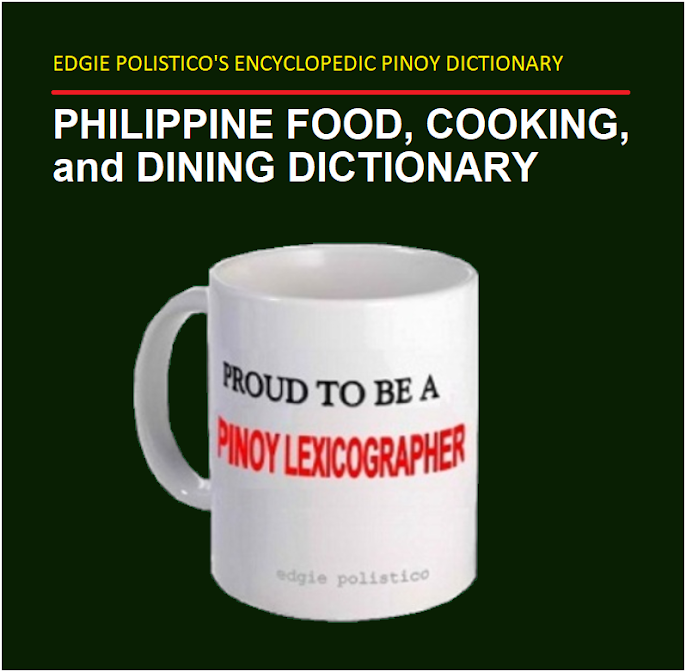.JPG) |
A bowl of boiled (half-cooked) ebun a barag presented during the sneak preview of MarQuee Mall's "Big Bite! The Northern Food Festival" in Angeles City last week
ebun a barag - (e-bun a ba-rág; Capampangan exotic food) [n.] monitor lizard’s egg.
Other local names:
- itlog ng bayawak in Tagalog
- itlog sa halo in Cebuano
- itlog sa hawo or itlog sa haw in Boholano
- illuk alivo in Itawis
This is the egg of the Capampangan monitor lizard (scientific name: Varanus bitatawa) they called barag or what is known as bayawak in Tagalog.
.JPG) |
The pliant shell of the egg would shrink after it is boiled (half-cooked) causing the surface to dent
|
.JPG) |
The taste of ebun a barag is agreeable. It reminisces the taste of masabaw na balut penoy. A friend, Kenny Ngo of Life is Kulayful gestures with approval after trying ebun a barag. |
 |
Its egg yolk is cream-colored and the egg white is transparent.
.JPG) |
The Capampangans would boil the bayawak’s (monitor lizard’s) egg as malasado (half-cooked) and eat the cooked egg by puncturing a hole on the top side of the shell and then squeezing the pliant shell. The egg’s content is often spread on hot, freshly cooked rice.
.JPG) |
It tastes similar to the balut penoy egg that is masabaw (moist and juicy)
.JPG) |

References:
- National Geographic, “Giant, fruit-eating monitor lizard discovered in the Philippines” Ed Yong, April 7, 2010, https://www.nationalgeographic.com/science/article/giant-fruit-eating-monitor-lizard-discovered-in-the-philippines
All photos by Edgie Polistico in this blog are copyrighted. ALL RIGHTS RESERVED.
If you liked this post and our site, share it.
Let us know your opinion on the subject. Feel free to comment in the comment section, below. We need to know what you think.
Tell us what other topics you would like us to write, share, and discuss about.
For more about Filipino food, see this Philippine Food, Cooking, and Dining Dictionary. It is OPEN and FREE.
Continue to follow my blogs. You can also follow and learn more by joining us in our Facebook group. Have more bits and pieces about our kind of food, ingredients, and ways of cooking, dining, and knowing food culture across the 7,641 islands of the Philippines. I will search for more and continue to share my findings. It is my pleasure to rediscover the known and least known things or the unheard ones and put them here for everyone to find, learn, and treasure.
Encouragement and enthusiasm are not enough. I also need moral support, prayers, and anything else that can uplift my spirit and keep my good reasons. Keep them coming. All I know is that I am happy with what I am sharing and giving away. If you are pleased and happy with what I am doing, just smile and please share the happiness. Keep sharing and include to share the PHILIPPINE FOOD ILLUSTRATED. I feel energized when my blog becomes one of the reasons why you are happy and smiling.
Edgie Polistico
.JPG)





+CabanatuanCity+-+watermarked.JPG)
+CabanatuanCity+-+watermarked+(2).JPG)
+CabanatuanCity+-+watermarked+(3).JPG)
.JPG)

.JPG)




